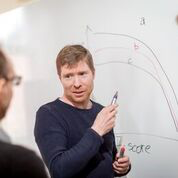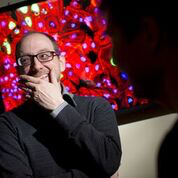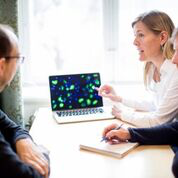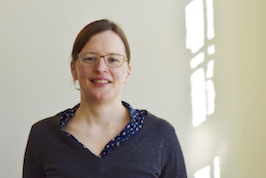
Research:
As researchers, we develop algorithms, computational methods and software tools to quantify and mine the rich information present in
(primarily) microscopy images, increasing the scientific value of experiments based on image data. We develop methods based on machine learning, computer vision, statistics, AI,
and bioinformatics to quantify image data and answer questions related to life science.
Our four largest, externally funded projects are
• the ERC funded TissUUmaps project, focusing on analysis and visualization of tissue and in situ sequencing data.
• the SSF funded HASTE project, focusing on hierarchical approaches for large-scale microscopy experiments. A brief description in Swedish can be found here.
• the SSF funded SysMic project, focusing on quantifying and understanding cell dynamics, and the processes that control motion.
• the SSF funded AST project, focusing on very fast antibiotics susceptibility testing.
Our past and ongoing research projects are best reflected by our
publications.
Support:





We provide research support and education in digital image processing and analysis for life science applications via the
BioImagInformatics (BIIF) facility of
SciLifeLab and the National Microscopy Infrastructure, NMI.
Brief descriptions on current and past projects can be found here.
We do not primarily analyze data for our facility users, but rather help users get started with their own analysis.
We find that projects work best when researchers are closely involved in the analysis of their own data.
BIIF is directed by Carolina Wählby and headed by Anna Klemm,
and has two nodes; and one in Uppsala, at the Dept. of Information Technology, and one in Stockholm, connected to the School of Computer
Science and Communication at KTH co-directed by Kevin Smith.
Anna Klemm, Petter Ranefall, Christophe Avenel and Gisele Miranda focus on research support and education, and Amin Allalou
works with technology development for large-scale quantitative phenotypic screening of zebrafish.
Upcoming workshops, courses and activities are announced on the
BioImagInformatics (BIIF) facility page. We are also happy contributors to the NEUBIAS Academy , a training school in bioimage analysis.
Apart from our own algorithm development, we work closely with developers of free and
open-source CellProfiler software, where the most important contribution is the WormToolbox. Our code has also been incorporated in KNIME.






